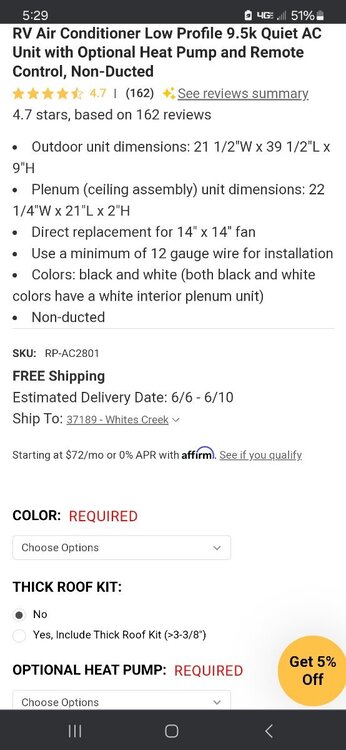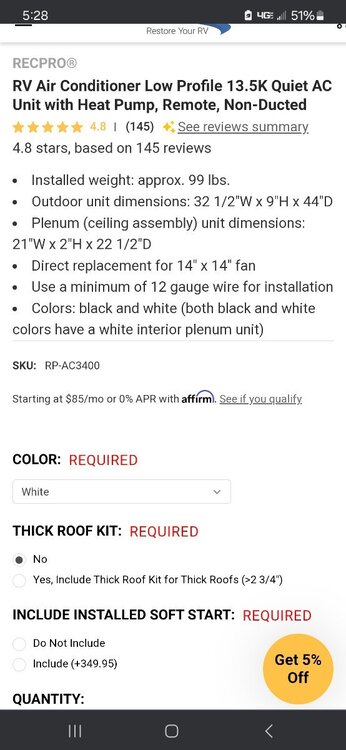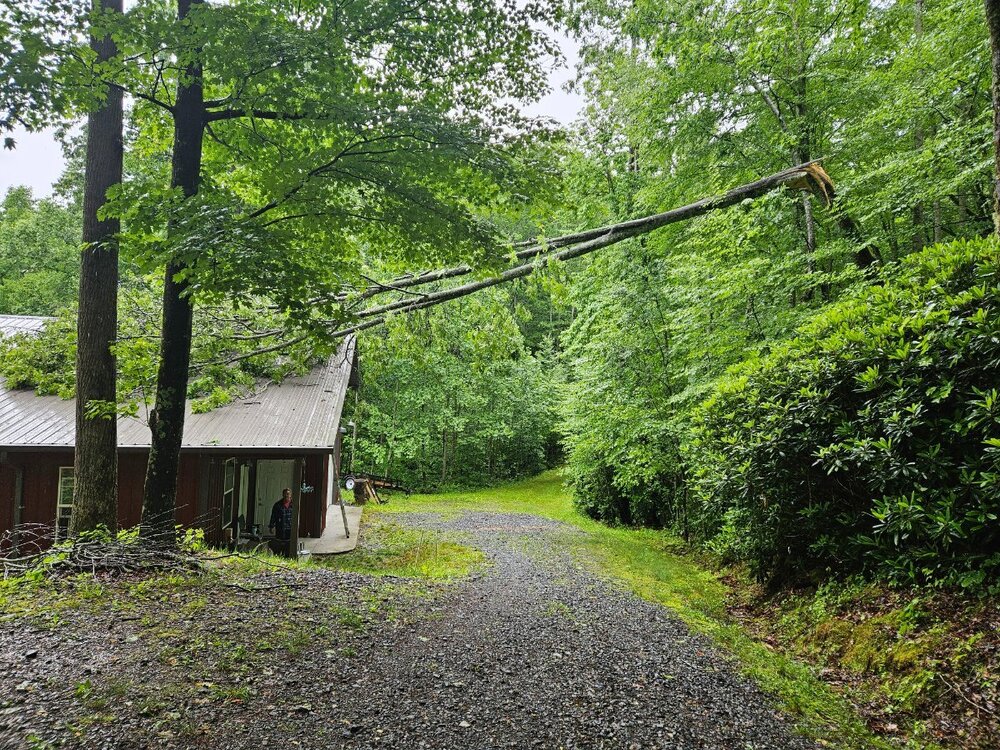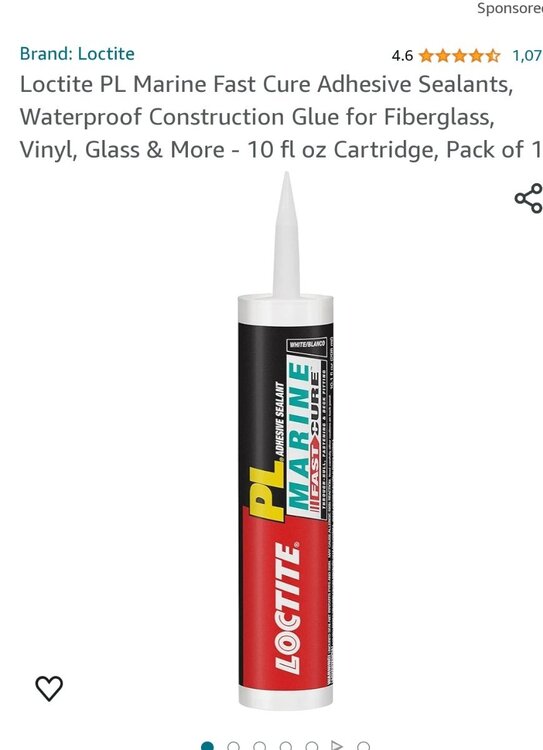-
Posts
9,787 -
Joined
-
Last visited
-
Days Won
350
Everything posted by SeaDawg
-

Battery Cable becomes too Short after replacing a battery
SeaDawg replied to SNY SD UP's topic in Mechanical & Technical Tips
The bigger question is: how well will one new lead acid battery play with three older batteries? Usually, the battery bank will only charge to the level of oldest/weakest battery. What happened to the 4th that you had to replace it?. How old are the other three? -
Split Rock Lighthouse (two harbors, near duluth) haven't stayed there yet, but the new Shipwreck campground gets rave reviews. Great trails and lots to do, see, and eat around Split Rock, Two Harbors, and of course, Duluth. Grand Marais is about as close to Canada as you'll get on the shore. Great community. My brother's in-laws live there in summers. Campground is big, right on the lake. Artsy little community, great folk school. Don't miss the big Ben Franklin. It's way more than the old dime stores of yore. Even and Oles pizza. Good walleye fish fry in any number of spots. Come back a different route. Visit Leech Lake, Bemidji, maybe gooseberry falls, Brainerd. Little Brainerd booms in summer and also winter ice fishing season. They even have a nice (smaller) Costco. Nearby Crosby is a biicyclists paradise, and a busy little town. I enjoy poking around Nisswa too. No shortage of good food in the Brainerd area. Avoid, if you can, going through the twin cities (Minneapolis/St. Paul.) I35 is old, and congested. I often go up through Wisconsin, but then, I have family there, too. Have a great time. Take lots of long sleeves and long pants lightweight. Minnesota mosquitos are the unofficial state bird.
-
Pisgah inn restaurant has amazingly beautiful layered mountain views before noon. Go for breakfast. Lunch/dinner views are limited by the sun. Reservations required the past few years. If you can't get a res, the views are great from the deck. Pisgah campground is nice, some privacy with rododenrons in between sites, but nothing special. Pretty much any campground on the parkway is nice, but limited services. Driving the Blue Ridege, and skyline drive, is really very, very special. Plan time to stop at many overlooks and enjoy it. Winding and narrowing, but so very beautiful. Slow speed limits. Camp several times to appreciate it all, and stop often. Skyland Cafe on the skyline drive has its ups and downs, but we've always enjoyed our stops there. Short hop off to Luray, Natural Bridge, Lexington, etc. Get your national park pass before you go. Asheville is fun, but we rarely go into downtown anymore. The historic charm (read narrow streets) isn't a lot of fun in a full size truck. Parking can be an issue. Grove arcade (America's first mall) is beautiful, as is historic Grove park inn. Roycroft furniture, huge fireplaces, in the old part. Great brunch onvweekend. East parking. Biltmore is lovely, but expensive. The grounds are amazing. Plenty of great farm to table foods, and inventive food in Asheville, and surrounding communities. Off the parkway, linville falls is a lively area. Get off a bit further in the TV, and newland// crossnore/ old fort give you a bit more of old north carolina. Banner elk is nice, but very touristy now. We had lunch in newland today with friends. Kayes on the river. Head down ash to the old lowes grocery to patlrk, and walk a block back, if you go. Next time, we'll go to tin trout in crossnore . @Steph and Dud B recommendations on i81 to go north is excellent. So much less stressful than 95. Driven it many times, going to erstern new york or canada. . You have a month. Take your time, and enjoy it. Ps. Deer island point campground in new Brunswick is rough, but beautiful. You can see the maelstrom from the point. Ferry to and from. Ferry to Campobello, then in to Lubec. We really loved camping in New Brunswick. Enjoy your journey.
-

Mini Dyson Humdinger Frankenstein
SeaDawg replied to rideadeuce's topic in Mechanical & Technical Tips
I've had three vacuums for the 2008 so far. The first black and decker was too puny, so got relegated to the upstairs in our home for tiny pickups. 2nd was a Dyson, I think v6, which I loved, and I bought an extension and attachments from Amazon or ebay. It lasted 3 or 4 years. (I got a Shark for home use, but it was too heavy to tote around, but actually works better than the dyson. ) Our vacuums get daily use. Japanese Chins shed like crazy. This time I bought an inexpensive Bissell pet cordless model at Walmart. It's no Dyson, but it does the job, and since not as powerful, works great on throw rugs . Has a roller brush (2 speeds) and a revised tool. At under $100, I'm ok with it. The part I don't like is that the charger doesn't connect to the removeable head unit, so I have to carry the whole thing. All the others the charger connected to the handheld section. Oh well. It's cheap, super light, not very big, and the super light part is great with my body right now. Weight restrictions from hand surgery and a few fractured ribs. -

Houghton Retrofit Process & Questions
SeaDawg replied to Geronimo John's topic in Mechanical & Technical Tips
@Nan, your grandson is a peach. -

Houghton Retrofit Process & Questions
SeaDawg replied to Geronimo John's topic in Mechanical & Technical Tips
Houghton keeps adding options. I see that a pre-installed soft start is now available for bigger models, and a Heat pump for the little houghton that we have. Sadly, the heat pump is not available for retrofit to our older unit. I checked. -
@Boudicca908, calendar quality photos (and memories). Thanks for sharing.
-
https://olivertraveltrailers.com/forums/topic/4156-how-hard-to-find-used-oliver-trailers-with-king-bed/#comment-41087
- 1 reply
-
- 3
-

-
I bought a new door. If your fridge is a cf130, same door as my truckrfridge tf 130. Same puny pins. I broke mine a few years ago because I tried tp close it with too much frost buildup. Part is readily available, and install is about 1 minute.
-

Houghton Retrofit Process & Questions
SeaDawg replied to Geronimo John's topic in Mechanical & Technical Tips
That Houghton a/c 48v is 48v dc only, not 110 ac. Can't be run on 120. I guess the point is to run directly from battery, no loss from inverter. Clearly labeled "not for marine use", so that's not the reason. 24 and 48v systems are common on boats, stepping down to 12v, or separate 12v bank for lights, etc. 24 and 48v systems are often designed for big winches, windlass, bow thrusters, and electric drives. Eliminates long runs of heavy Guage wire, power loss, heat gain, etc. I was really surprised to see that on the recpro site. Can't imagine it's a big market. -
Welcome from #12! We love photos. Happy travels, and let us know how we can help.
-
Sorry for the threaddrift, Mike. We're all good now. We have a friend in the tree service. Came out to survey two hours after the tree fell Monday morning. By Tuesday noon, his skilled crew got everything off the roof, with no other collateral damage but the original bashing of the ornamental cupola, and a few minor original dents and dings. Took down five other "suspects" for us, near rhe barn. Anyone in the Asheville area, I can highly recommend B nB Tree service. Owner Craig is highly responsive. TJ, lead guy on our last two jobs, is highly skilled, very safety concious, and super careful. A less careful crew could have caused major consequential damage. @jd1923, you can bring that chain saw in the fall, if you like. We'll run races with our big Husqvarna ranchers, when the pile of logs has had time to dry a bit. Stihl 026 is an awesome piece of equipment! This job required a bucket truck, lift, and skilled service. The metal roof was slick as snot, by the way.
-
We replaced a big bank of six volts on the boat with the Epoch 460. It's heavy, but light for the power it stores. Epoch also makes well reviewed smaller batteries, with comm. Two 100 ah batteries would probably fit, but the 460 is ip67 rated (best for the boat) and I think the 200 are only ip 54 or ip57. Still, in a sealed compartment... There are options beyond Battleborn. None are actually "drop in." My husband and our friend did some wiring changes. We already had controllers. Required setting changes. So far, so good, but only six months or so in. 11 year warranty. Epoch was a fraction of the cost of battleborn, for same storage capacity. Will prowse reviews on tear down were impressive. We took a fly, and I'll update as we go. (600 watts of solar on the boat. No shore power connection, normally. We haven't plugged in for 5 years, at least.) So, we'll update as the years go on.. JULY 2025 EDIT: Will Prowse has done some testing on current production Epoch batteries, and they are no longer on his recommendations list. Before buying any lifepo2 batteries, I'd google youtube will prowse (insert battety name) and see what he has to say. Will doesn't take free stuff for recommendations, and he's a sharp, thorough young man. Many of us here have followed him for years on YouTube, and his forum.
-
@jd1923, removal depends on the sealant. Heat can often help, and a plastic blade, for the big strips. With the suspected 4200 on the oliver light , we used a Heat gun on low, at some distance to not deform the fiberglass, passing it thru the lite. (I was outside, my husband inside.) Isopropyl alcohol works on some. Mineral spirits on some (but needs to be cleaned up later.) Googone caulk remover I've heard works on most caulk except silicone. 3m makes a remover for virtually every type of caulk manufactured. If you know the type of caulk you're dealing with , you can call the manufacturer for best practices. Heat first, plastic blade, and chemical removal last is our usual practice. Sorry I didn't respond earlier. We've been a bit busy with storm cleanup.
-
Won't change my mind. It has adhesion, but not a true adhesive. Imo. it's self healing when adding mechanical fasteners. I wouldn't drive with vents open in the trailer,if thie light is only held by synthetic butyl, as we sometimes do. Glad it has worked for you, and as I said, not familiar with the brand. Imo, synthetic butyl is the very best bedding compound for windows and lights. It stays flexible for a long time (maybe forever.?) We'll see.
-

Norcold Refrigerator Not Drawing off Solar?
SeaDawg replied to Cort's topic in Mechanical & Technical Tips
Set your fridge to propane (cycle the button) and let us know how it works. -
If by Scubarx post it means that Oliver has gone to silicone caulk everywhere, I'm not happy. I hate that stuff, except where in contact with lexan or polycarbonate, imo. Too difficult to remove, and even silicone won't stick to old silicone residue.
-
@DavePhelps, you'd probably be interested in this article by Practical Sailor. Your fave, sika 291, and mine, loctite marine pl fast cure, tied for first place in extensive testing. 😃 https://www.practical-sailor.com/boat-maintenance/marine-sealant-adhesion-tests Practical Sailor is my go-to source for all things fiberglass. Back in the day, when it was print only, we kept issues in binders, with an index. (Far before Google days....) When we replaced our Oliver sign/third tail light, our sign was crazed, and broke when we tried to remove it to rebed. I think Oliver used epoxy tabs, and 4200, old school. Loctite is very thick, but I think you may have had an old tube. I always look at the Julian manufacturers date. It's only good for a year. Six months (maybe) in the garage fridge, sealed.
-
Dave, bed-it is advertised as a sealant, not adhesive. I've never used it, so can't comment, but we've always used mechanical fastening with butyl. Their website seems to indicate need for mechanical fasteners. It's not strictly butyl, bit a proprietary synthetic. I'm going to look into it further. https://bed-it.com/?gad_source=1&gclid=Cj0KCQjwmMayBhDuARIsAM9HM8dXGcsPUM4Q1gkegJ1KqTXDP31KkBDpG1tTgV8nhpgRL4YtIdHdlxAaAihcEALw_wcB We've used a number of great sikaflex products, in specific applications. Sikaflex makes amazing products, and a huge array of them, for specific applications. 291 is polyurethane, not polyether, so not recommended for bonding to plexi or polycarbonate. I don't know what the Oliver sign is, but guessing plexi, so I went with a polyether for caulk, (after butyl, for perimeter) compatible with plexi. Just in case. https://usa.sika.com/en/industry/global-industry-content-pages-to-keep/commercial-vessels/elastic-sealing-bonding/watertight-sealingbonding/sikaflex-291.html?_gl=1*1b55yh0*_ga*MTM3NzMwMDk0OC4xNzE2Njc4NzAy*_ga_K04G1QB2XC*MTcxNjY3ODcwMi4xLjAuMTcxNjY3ODgyMi4wLjAuMA.. The loctite marine has been a good "all arounder" for us, for the last few years. None of these adhesive sealants have a long shelf life, so keeping one around for most projects ( fiberglass to wood, metal, plexi, etc.) has worked for us. We'll see how it plays out. Works in progress, avoiding silicon. 🙂
-
Hi, and welcome to two venerable "clubs," the Oliver family, and the Every Day is Saturday Club. We've been lucky enough to enjoy 17 seasons in both. Here's to your adventures! 🍾
-
And, start with small, sharp bit at low speed. Expand.
-

Optional Furrion Shore Power Connector Loose
SeaDawg replied to Wandering Sagebrush's topic in Mechanical & Technical Tips
Our 2008 connection is not furrion. Don't know about future years. Could this have been a previous owner mod? -
You know my feelings on the Oliver light. Permanent solution is remove, rebed with butyl, and add mechanical fasteners/ screws. Butyl is a wonderful, pretty much permanent sealant, but not an adhesive. That said, loctite marine sealant, fast cure is what we've been using as a polyether flexible sealant adhesive for a number of years, ollie and boat. No yellowing in Florida sun (yet.) Polyethers play well with fiberglass, wood, and plastics. Def no to 5200. Either of the 3m 4000 or 4200 are difficult to remove, later, imo, though 4000 has better uv resistance, so I've read. Pick your poison. And, add an eyebrow of rv Eze gutter over the light, as a bonus. The loctite product is "reasonable" at about $17 at lowes or Depot. Do read the date code. It's sometimes out of date at big box stores, and then it's tough to work, and useless.










